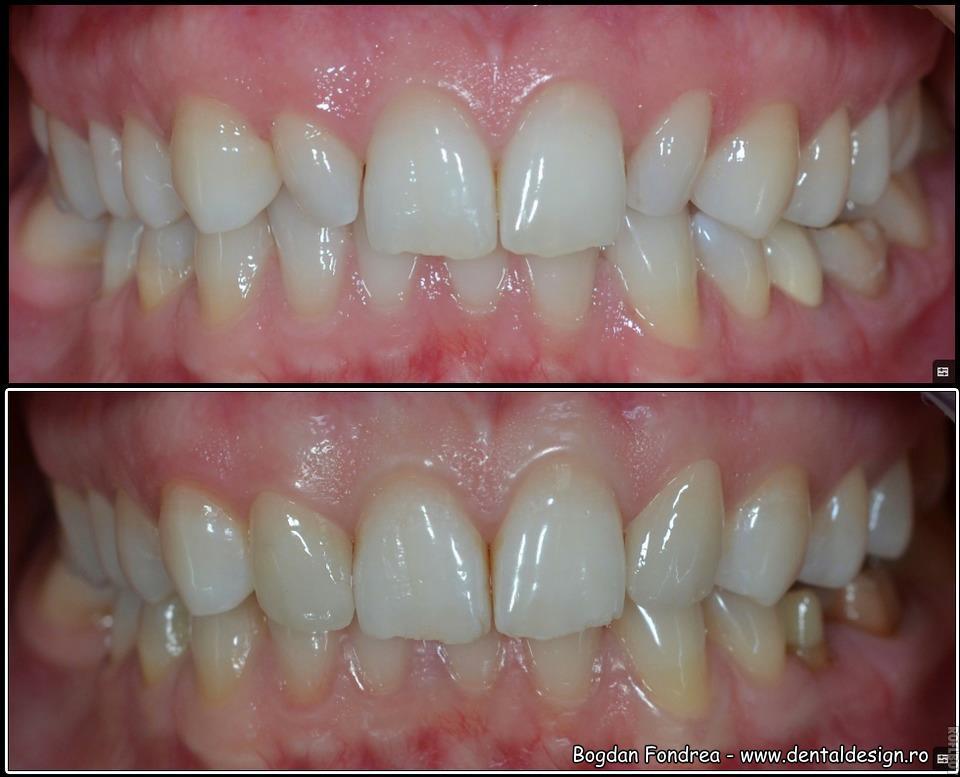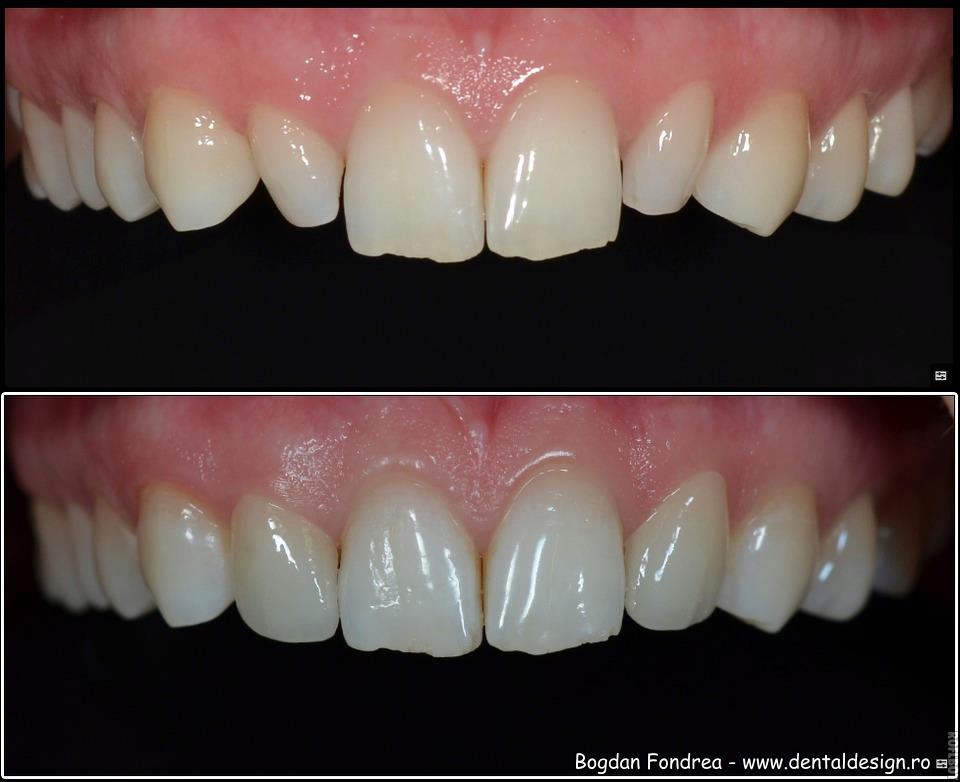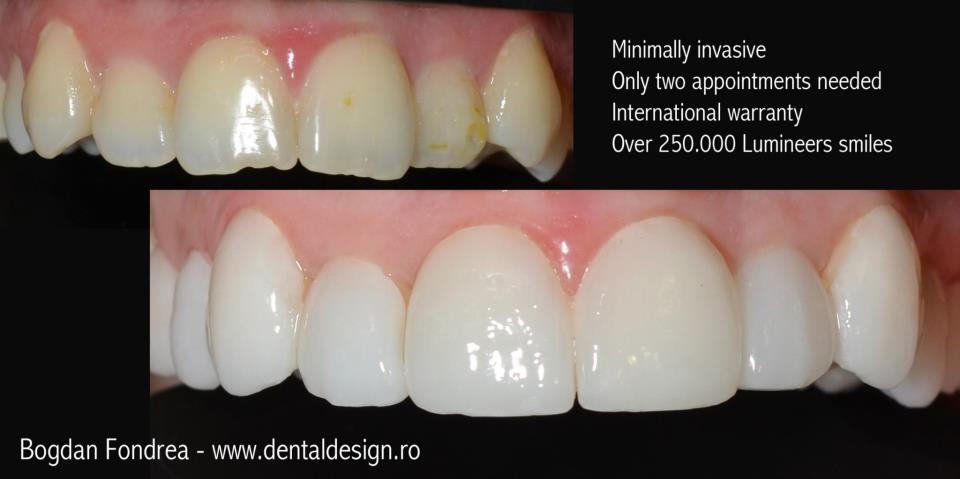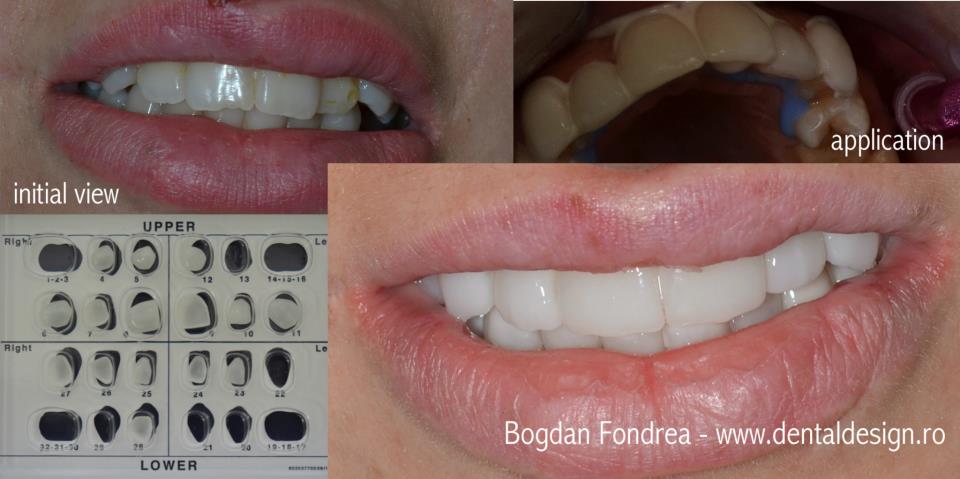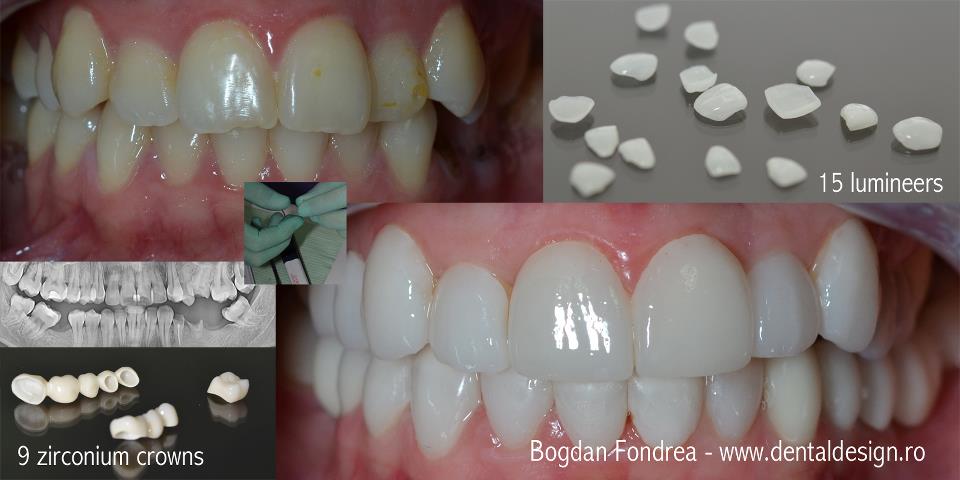What is a veneer?
A veneer is a thin layer of ceramic that is added over the visible surface of a tooth for aesthetic purposes, namely to enhance the smile appearance. Maybe you have crowded or misaligned teeth or there are other visible problems as stains, cavities, or differences in size and shape of your teeth. A lot of these problems can be solved with porcelain veneers. Please note that problems as infections, gingival, periodontal and root canal procedures should be solved prior to the veneer preparation.
Why is Lumineers different?
The main difference lies in the ceramic. Not all ceramics are the same and Lumineers uses a special kind called Cerinate. This makes a minimum thickness of 0.2 – 0.3 mm possible. The traditional veneer needs at least 0.5 mm of thickness. So the desired result is obtained with half the thickness, double the strength. Having this advantage, there is no need to prepare the tooth, therefore the tooth structure will remain intact. For the traditional veneer an important thick layer of the tooth needs to be removed, making the procedure sometimes painful and the tooth is inevitably altered.
The big question is the following: Are they strong enough? Well, yes they are! As a matter of fact you get a warranty from the producer with your name on it so you should’t worry about this, any problems that might occur will be fixed. Clinical testing shows that Lumineers will last over 20 years. And this is good to know especially that over 250.000 people are using them.
So, let’s see two cases that will ilustrate this better than any words.
Case 1.
The two lateral incisors were very small, making the smile inharmonious. This case was a simple, two appointments one. The first appointment was for taking the impression and the second one for placing the Lumineers. No shots, no pain, no preparation.
Case 2.
This was a complex case, with 15 Lumineers and 8 ceramic zirconium crowns that needed to fit together perfectly. For the Lumineers we had to perform a minimally preparation because some teeth were misaligned and needed to be reduced in size. The preparation only concerned the enamel layer so the tooth remained vital and the procedure was not painful at all. The lower teeth were prepared to gain space for a correct bite. We also needed to change the colour of the smile, the shape of the teeth and to replace (with porcelain zirconium bridges) the missing teeth.
Conclusion:
These cases illustrate two situations that are suitable for Lumineers. Not all cases can be solved this way and you should ask your specialised dentist about more details for your case.
And, when your Hollywood smile is done… keep on smiling but dont forget to brush and floss! 🙂
Dr. Bogdan Fondrea – www.dentaldesign.ro

